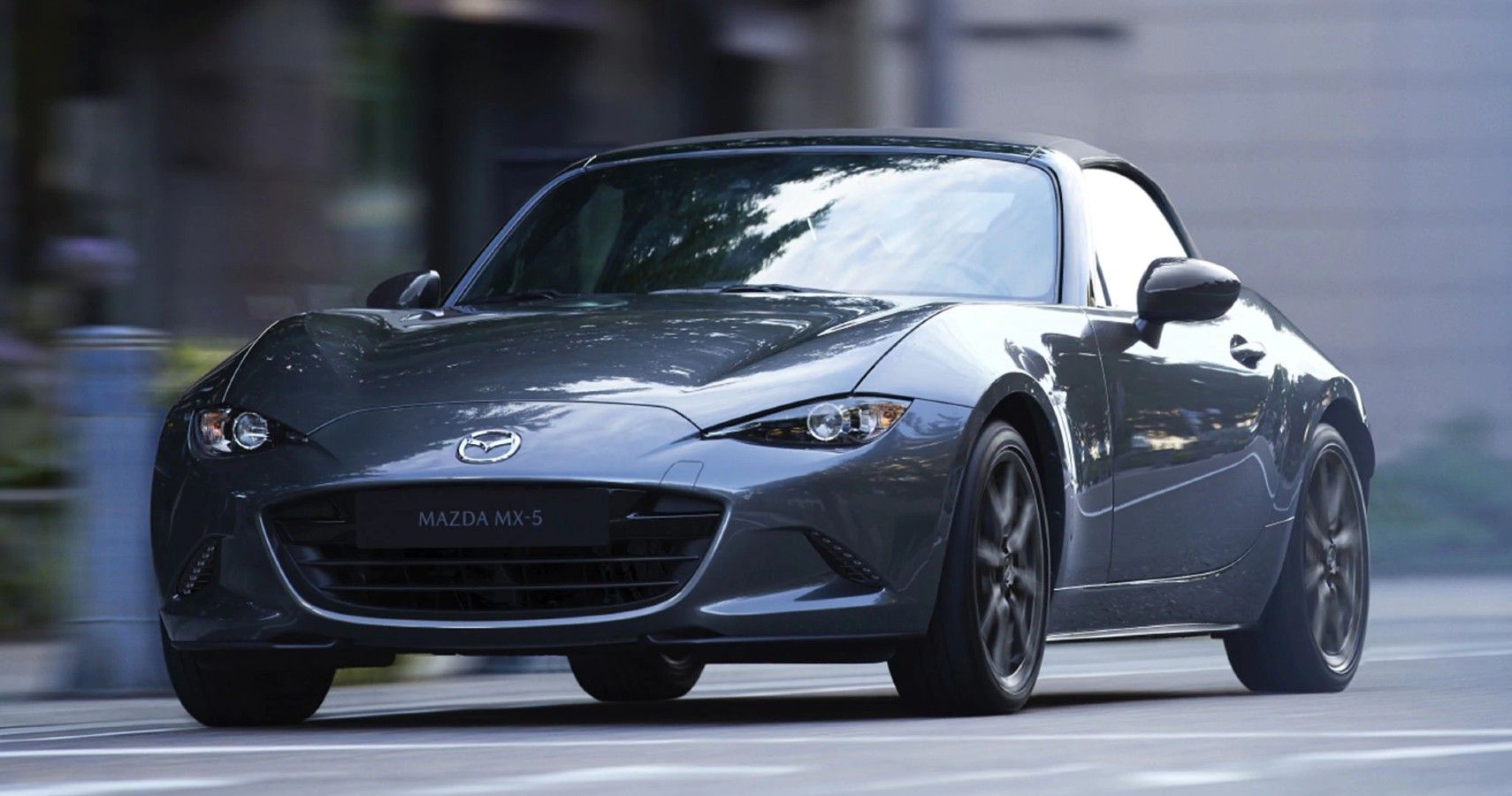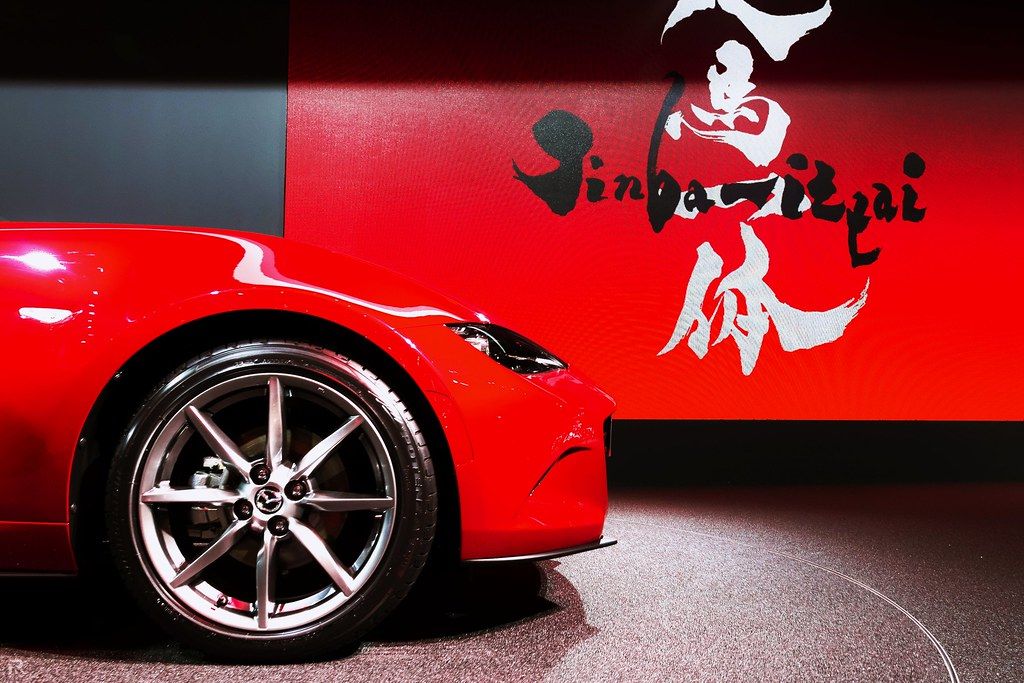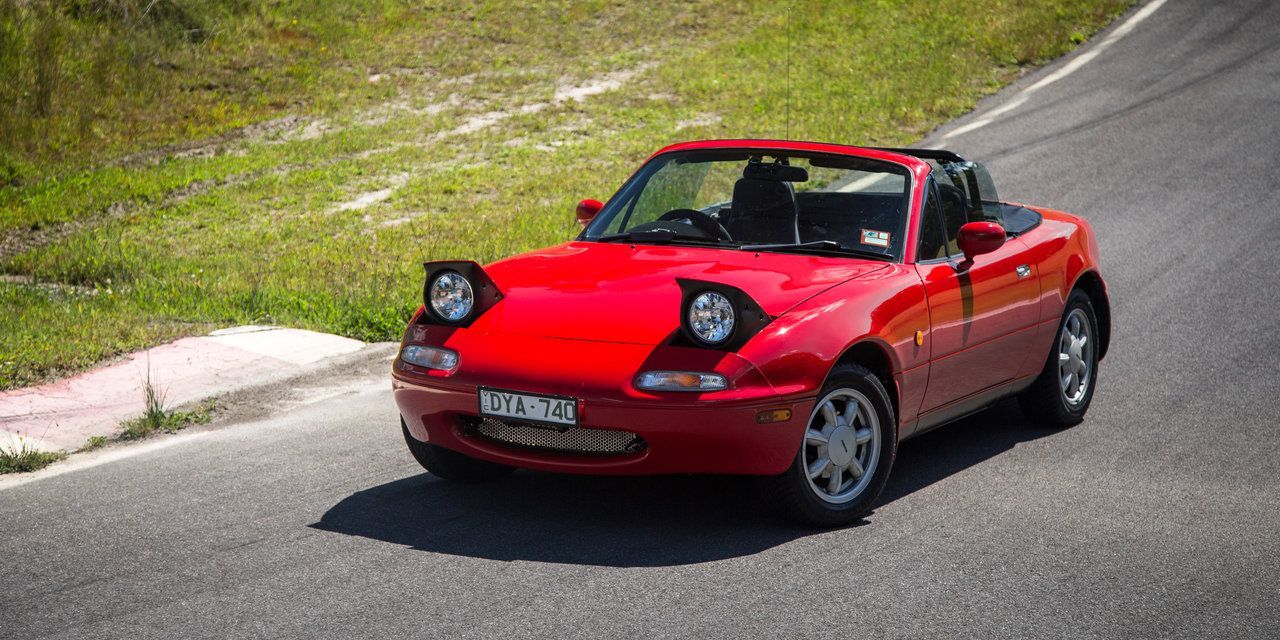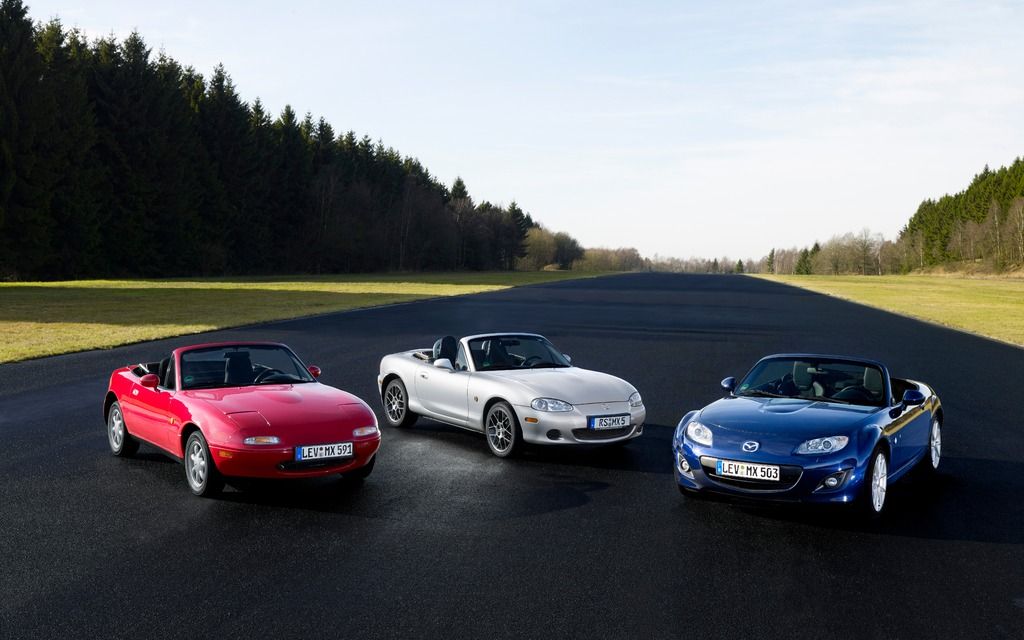The Mazda MX-5 was revealed in the 1989 Chicago Auto Show and has ruled over the two-seater sports car segment ever since. However, it's not the history of this legendary car that claimed the unfathomable love of people. The development of the Mazda MX-5 started seven years before its official launch, and Mazda engineers took numerous bold and revolutionary steps to make the CX-5 a reality.
The car has seen several upgrades over the years, all of which have been well-received and have throned the CX-5 as the best-selling two-seater sports car.
Developing The 'Jinba Ittai'
The plan to build an open-top sports car was in itself a tough decision for Mazda to take. By the time Mazda's engineers thought of a unique two-seater affordable sports car, the world had already bid adieu to the lightweight open-top cars due to stricter emission and safety standards. By the 1980s, the challenge became even more complicated because of rising fuel prices. Now, Mazda had to design a lightweight and open-top sports car while meeting the market's safety standards. At the same time, Mazda wanted to make a fuel-efficient yet powerful engine that could draw the interest of fast car lovers.
This difficult situation gave birth to the amazing concept of Jinba Ittai, which meant - rider and horse as one. While designing the car, the rider's satisfaction was given utmost importance, which is still seen in Mazda cars today. The next step was to choose a suitable drivetrain for the car. The best and most reliable option was a rear-wheel drivetrain, but it did not work very well with the lightweight concept. So, Mazda revolutionized the idea of a sports car drivetrain and selected a low-powered Inline 4-cylinder 1.6-litre 16-valve DOHC engine. Again, the automaker ditched a turbo or supercharger, which was (and still is) a common sight in a sports car's engine. The choice of engine shone the idea of 'Jinba Ittai', since the automobile became much easier and smooth to drive.
Lightweight Is The Key
Though the Mazda MX-5 was built eyeing the world's largest US car market, the car was (and is) truly Japanese, with each part of it made to materialize the Jinba Ittai concept. From the very beginning, Mazda was very much concerned about the car's weight. More weight meant difficulty in handling, so Mazda shaved everything unnecessary from the car's design.
The first step in reducing weight was to select a low output engine without any performance-enhancing components, and then came to the choosing of materials to build the car. For example, the body of MX-5 was made of aluminum that lowered its center of gravity, and also the conventional cast-iron exhaust was replaced with stainless steel to enhance gas flow. The Japanese tradition of Jinba Ittai met with modernity by using advanced computer analysis to design the vehicle. Although incorporating four seats was a much safer idea, Mazda took the bold step in favor of two seats to reduce the weight.
The Evolution Of MX-5
The first car and generation of MX-5 were named Miata. It remained in the market from 1990 to 1998 and was powered by an Inline 4-cylinder 1.6-liter engine that produced 116 HP and 110 lb-ft of torque. The car had a simplistic design but was stylish enough to turn heads. The engine was not the most powerful but could do 0 to 60 mph run in 8.2 seconds with a top speed of 116 MPH. Mazda offered an optional removable hardtop and limited-slip differential with this car, while the signature style pop-up headlights were standard. Later a 1.8-liter 128 HP engine was added to inventory with ABS braking, and a four-speed automatic transmission was equipped in the car instead of a five-speed manual. A further engine upgrade pushed the horsepower to 133.
The second generation of MX-5 Miata was released in 1999 and remained in the market until 2005. In the beginning, it carried the same 1.8-liter inline-four engine, but power was increased to 140 HP with 116 lb-ft of torque by using high compression. The acceleration rate was improved by 0.2 seconds by incorporating a new six-speed manual transmission. Major styling changes included replacing the iconic pop-up lights with fixed ones, a retractable wind deflector, and a redesigned front fascia with fog lights. Later, a turbocharged version of the 1.8-liter engine boosted the power to 178 HP and 166 lb-ft of torque. At the end of this generation, a retractable hardtop coupe version of MX-5 was released too.
For the third generation, Mazda dropped Miata from the MX-5. Instead, the car received a significant upgrade in powertrain by incorporating a 2.0-liter Inline 4 engine that was capable of producing a hefty 170 HP and 140 lb-ft of torque. Standard transmission remained the same, but Mazda offered an optional six-speed manual transmission with steering-mounted paddle shifters in this generation.
The fourth and present generation MX-5 came in 2016, and it started with a 2.0-liter Inline 4 engine that produced 155 HP and 148 lb-ft of torque, and at present, the engine is SKYACTIV-G 2.0 DOHC 16-valve 4-cylinder with VVT. This engine is the most powerful in MX-5's history and produces a roaring 181 HP.
Recognition of its Greatness
Mazda MX-5 is probably the only car in automotive history that has registered its name in the Guinness Book of World Records twice. Launched in 1989, the MX-5 reached the 531,890 sales mark in just ten years and got its first mention in the record book. It got its second mention in the record book again in 2007 when the sales mark reached an unbelievable 800,000 units. The MX-5 has won 86 awards in its entire run, including Top Gear's ‘2005 Roadster Of The Year'.
The Mazda MX-5 is the glamorous star of Japanese automobile engineering that has remained a favorite of sports car lovers for three decades. The car is still on the market, and Mazda has continually upgraded it to meet the admirers' expectations with changing times.




